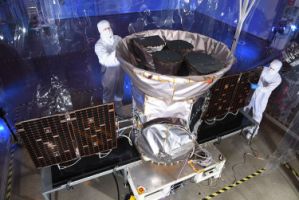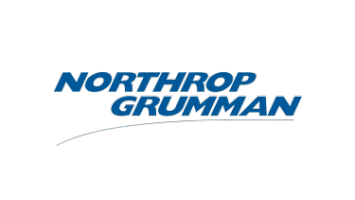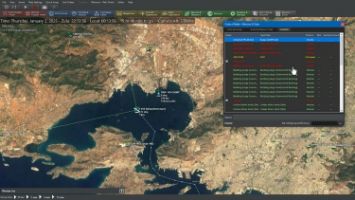Spacecraft exceeds expectations as it continues to discover new worlds outside of the solar system

DULLES, Va. – July 25, 2019 – Northrop Grumman Corporation (NYSE: NOC) celebrated one year of successful science operations for NASA’s Transiting Exoplanet Survey Satellite (TESS), built and operated by the company for NASA. In just one year, the observatory has discovered more than twenty confirmed planets and identified hundreds of additional candidates for further study in the Southern Hemisphere. TESS will now continue its mission by performing similar observations in the Northern Hemisphere.
“The TESS observatory is exceeding expectations after just one year scanning the skies,” said Steve Krein, vice president, civil and commercial satellites, Northrop Grumman. “As the provider of mission operations for the spacecraft, Northrop Grumman is proud to support this historic mission as it continues to expand our knowledge of the universe while demonstrating our legacy of flight proven scientific spacecraft.”
As the first-ever satellite to perform an exoplanet survey of nearly the entire sky, TESS’s mission, using four wide-field cameras, is to identify planets ranging from Earth-sized to Jupiter-sized, orbiting a wide range of stellar types at various orbital distances. TESS began scanning the skies for new planets July 16, 2018, nearly three months after its successful April 18 launch from Cape Canaveral Air Force Station in Florida.
The TESS satellite was designed, manufactured and tested by Northrop Grumman at the company’s satellite manufacturing facility in Dulles. The company is also responsible for handling mission operations for the observatory. After launch, the observatory went through several tests and began preparation for a series of in-space maneuvers, including a lunar gravity assist, to reach its targeted high-Earth orbit. This lunar flyby was executed May 17, 2018 and the final period-adjustment maneuver was performed May 29.
The mission team recently announced the discovery of yet another planet, between the sizes of Mars and Earth. The planet, called L 98-59b, marks the tiniest discovered by TESS to date. L 98-59b is around 80 percent Earth’s size. Its host star, L 98-59, is an M dwarf about one-third the mass of the sun and lies about 35 light-years away.
TESS is based on Northrop Grumman’s LEOStar-2™ bus, a flight-proven and flexible satellite platform that accommodates a wide variety of missions. The company has several other satellites in production for upcoming NASA missions including Landsat-9 and the JPSS-2, -3 and -4 weather spacecraft which use the larger LEOStar-3™ bus.
TESS is a NASA astrophysics explorer mission led by the Massachusetts Institute of Technology (MIT) in Cambridge, Massachusetts, and managed by NASA’s Goddard Space Flight Center in Greenbelt, Maryland. Dr. George Ricker of MIT’s Kavli Institute for Astrophysics and Space Research serves as principal investigator for the mission. Additional partners besides Northrop Grumman include NASA’s Ames Research Center in California’s Silicon Valley; the Harvard-Smithsonian center for astrophysics in Cambridge, Massachusetts; MIT’s Lincoln Laboratory in Lexington, Massachusetts; and the Space Telescope Science Institute in Baltimore, Maryland. More than a dozen universities, research institutes and observatories worldwide are participants in the mission.
Northrop Grumman is a leading global security company providing innovative systems, products and solutions in autonomous systems, cyber, C4ISR, space, strike, and logistics and modernization to customers worldwide. Please visit news.northropgrumman.com and follow us on Twitter, @NGCNews, for more information.








